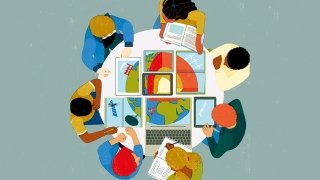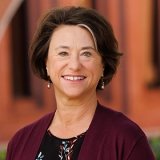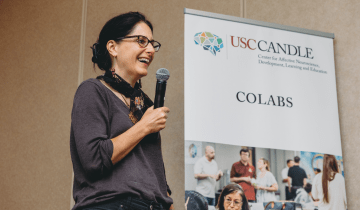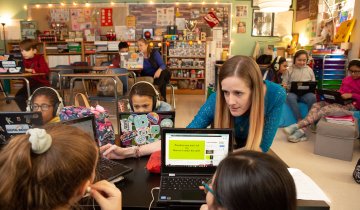A seventh-grade teacher is packing materials after class when a student approaches with a question.
“Did dinosaurs and humans live at the same time?” she asks.
Replies the busy teacher: “Well, you know, you can Google that to find out.”
The student pulls out her phone, types in her question and finds a surprising “fact”: They did coexist.
Gale M. Sinatra, the Stephen H. Crocker Chair and a professor of education and psychology at USC Rossier, explained that this theoretical example demonstrates the harm caused by search engine algorithms that push the most clicked-on examples (not necessarily the most scientifically accurate information) to the top of an online search.
However, with a 2022 Pew Research Center report showing that 22% of Americans profess little to no confidence in scientists, Sinatra is in the fight against science denial. In 2021, she co-authored a book on the subject, Science Denial: Why It Happens and What to Do About It. And now, a $2.8 million grant from the National Science Foundation ($165,000 of it going to USC Rossier) will fund the development of new tools to show teachers how to instill sound scientific thinking in their students.
“We are using a system of ‘lateral reading’ developed by colleagues at Stanford to help students source and vet online information, much like a fact-checker,” Sinatra said.
Her collaborators include University of Maryland researchers Doug Lombardi (Sinatra’s former doctoral student) and Sarah McGrew, who, along with Sam Wineburg at Stanford, developed the lateral reading technique, in which students open a new search window and look up who is providing the information in the top hits. Students are taught to ask, Is it a credible source? Is it trying to sell something or make a political argument?
In the dinosaur example, the student would learn via lateral reading that the source claiming “available evidence shows that man and dinosaur coexisted” is an organization dedicated to proving the accuracy of biblical teaching.
“The likelihood of getting accurate scientific information by googling is not high,” Sinatra said. “What pops to the top is the most clicked-on, advertised and, often, least accurate content.” Many students who get this instruction catch on quickly, Sinatra said.
Combining science and social studies
The NSF support came on the strength of the team’s instructional scaffolds for teachers to help students parse “socioscientific” issues such as water security or climate change. Along with evaluating sources using lateral reading, the evaluation of alternative explanatory models will also be a vital part of the strategy.
Model-evidence link (MEL) diagrams are a technique that Lombardi has used for years. Students use them to analyze evidence and decide on the plausibility of a particular scientific model for issues such as climate change or extreme weather in light of alternative, non-scientific explanations. The combination of lateral reading and the MEL diagram in this grant has the multidisciplinary benefit of drawing on literacy concepts from science education and social studies.
The researchers will work in tandem with science and social studies teachers. They will also test the teachers’ students on how they are assimilating the fundamental scientific, social and civic phenomena at play in the socioscientific topics they study. The ultimate goal is to sharpen the evaluation skills of middle and high school students to help them develop as citizens in a functional democratic society.
What’s next?
In future work assessing kids’ ability to evaluate online information, Sinatra and her colleagues may explore TikTok and other social media where Generation Z increasingly gets news—and, to a degree, misinformation.
“There is a lot of reliable information you can find on the internet, so we don’t want kids to be so skeptical that they don’t believe anything,” Sinatra said. “I’m not going to measure ice cores in Antarctica, but that doesn’t mean I can’t accept that human factors cause climate change.”
At some point, you have to trust the science, she said: “A better understanding of science helps our health and well-being and increases the probability of creating an environment that we can survive in.”





